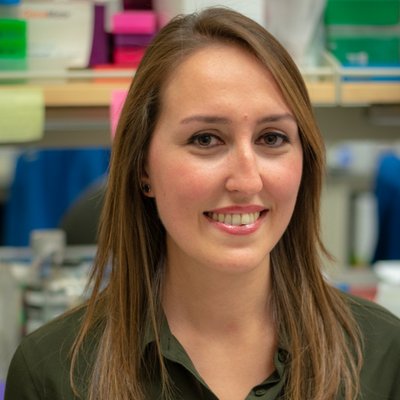Introducing the Buck Institute’s Reproductive Biology Hub, a one-of-a-kind facility to support research on the interactions between female reproductive biology and aging
Scientists, brilliant as they may be, can’t be experts in every field. To help connect scientists with the tools and expertise outside of their own niche, core facilities supply centralized resources that span scientific disciplines and departments; for example the Buck Institute has eight core facilities, which provide instrumentation, technology and services from bioinformatics to mouse studies. But no one in the world has ever made a core facility that provides centralized expertise in all aspects of research into reproductive aging. That is, until the Buck opened the Reproductive Biology Hub in 2020.
 “There is groundbreaking aging research going on at the Buck, but not a lot of expertise in reproductive aging,” says Bikem Soygur Kaya, PhD, who directs the facility. Or vice-versa, a researcher might know a lot about aspects of reproduction but not much about aging per se. “We can provide services and training to help ask the right questions in whatever model researchers study to get answers about female aging.”
“There is groundbreaking aging research going on at the Buck, but not a lot of expertise in reproductive aging,” says Bikem Soygur Kaya, PhD, who directs the facility. Or vice-versa, a researcher might know a lot about aspects of reproduction but not much about aging per se. “We can provide services and training to help ask the right questions in whatever model researchers study to get answers about female aging.”
Kaya addresses questions such as what the primary drivers of ovarian aging are, and potential interventions to extend ovarian function and healthspan in females.
The ReproHub as it is known, was envisioned in 2019 as a resource for the Buck Center for Healthy Aging in Women (previously the Center for Reproductive Longevity and Equality) to increase understanding of the mechanisms underlying ovarian aging by promoting collaborations between the fields of reproductive science and aging.
 “I conceived the vision for the ReproHub to attract the most creative and best minds from other fields to work in this space,” says Jennifer Garrison, PhD, who directs the Center. “It is a huge barrier to entry to move into a new field, and we knew that in order to do groundbreaking work, we have to build resources to help the field gel in a way that accelerates progress.”
“I conceived the vision for the ReproHub to attract the most creative and best minds from other fields to work in this space,” says Jennifer Garrison, PhD, who directs the Center. “It is a huge barrier to entry to move into a new field, and we knew that in order to do groundbreaking work, we have to build resources to help the field gel in a way that accelerates progress.”
This is the first and only core facility focused on reproductive aging in the world, according to Garrison and Kaya. “There is nothing like it anywhere else,” says Garrison.
The facility provides training to researchers, both from Buck and from other institutions. “We have the experience, so we lower the barrier to enter the newly forming field of reproductive aging,” says Kaya. “We are here to be a resource center and instant collaborators.”
Beyond training, the facility provides intellectual support, because sometimes experimental results are not straightforward or obvious. Maybe a study’s mice have stopped breeding, or an aberration pops up and it isn’t clear what is the right direction to explore what is going wrong.
“It is a lot,” Kaya says. “Reproductive biology is not only ovaries, itis not only the uterus. It is a whole hormone circuit that we need to evaluate.”
Kaya has an ideal background for helping others understand the nuances of reproductive aging research. After she earned a master’s degree in reproductive biology in her native Turkey, she merged two of her fields of interest, reproductive and developmental biology, throughout her PhD studies. Along the way, she realized that most researchers in any field including aging don’t use females in their experiments. “If females are always excluded, how are we going to learn about what is happening in the female body with aging?” she asks.
As she began to wonder about this, the Global Consortium for Reproductive Longevity and Equality (soon to be called ProductiveHealth) was launched, which was perfect timing for her, as she applied for and was granted funding for a postdoctoral project that, due to the scarce support for female reproductive aging research from other funding sources, would not have been possible otherwise. She studied how early events of oocyte development ultimately affect oocyte fate during aging.
“Bikem was one of our grantees, and it provides a wonderful continuity that the next step in her career is directing the ReproHub,” says Garrison.
In addition to running the facility, Kaya remains actively involved in research. “I have my fingers in everything. It is so much fun,” she says. “The beauty of having a reproductive biology hub is that a lot of people who have never thought about how ovaries might influence healthspan before are starting to think about it now.”

